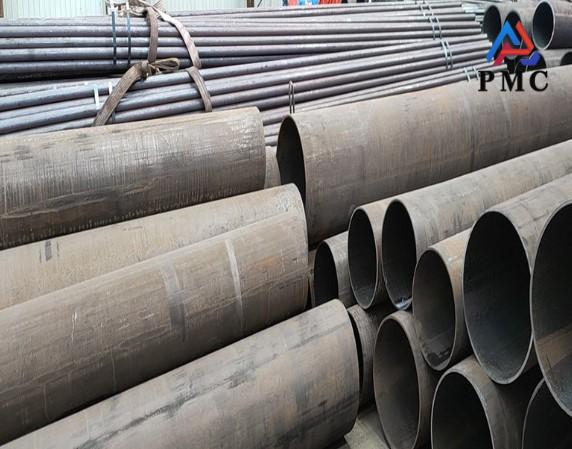
ASTM A53 Grade A vs Grade B Pipes
ASTM A53 is the standard for seamless and welded black iron and hot-dip galvanized steel pipe, established by the American Society for Testing and Materials (ASTM). It is widely used in fluid transportation, structural support, and other fields. Grade A and Grade B are the two most commonly used grades under this standard. They differ significantly in mechanical properties, process requirements, and applicable scenarios. A detailed comparison is shown below:
Core differences: mechanical properties and process requirements
Mechanical properties are the core difference between Grade A and Grade B, which directly determines the load-bearing and pressure-resistant capabilities of the pipe. Process details are also adjusted according to different performance requirements. Specific parameter comparisons are shown in the table below:
|
Comparison dimension |
ASTM A53 Grade A |
ASTM A53 Grade B |
|
Tensile strength |
Minimum 330 MPa (approximately 48,000 psi) |
Minimum 415 MPa (approximately 60,000 psi) |
|
Yield strength |
Minimum 205 MPa (approximately 30,000 psi) |
Minimum 240 MPa (approximately 35,000 psi) |
|
Elongation |
When the wall thickness is ≤12.7mm, the minimum is 30%; when the wall thickness is greater than 12.7mm, the minimum is 25% |
When the wall thickness is ≤12.7mm, the minimum is 28%; when the wall thickness is greater than 12.7mm, the minimum is 22% |
|
Welding process requirements |
Welded pipe (ERW or furnace welded) has relatively basic weld inspection requirements and is suitable for low-pressure scenarios. |
Welded pipes require stricter weld quality control (such as some requiring ultrasonic testing), while seamless pipes have higher process precision and are suitable for medium and high pressure scenarios. |
|
Heat treatment |
No mandatory heat treatment required, only basic forming performance needs to be guaranteed |
Some thick-walled pipes (wall thickness > 12.7mm) need to be normalized or stress-relief heat treated to improve material stability. |
Differences in applicable scenarios
The difference in scenarios between the two is entirely determined by mechanical properties, with the core being the distinction between "low voltage/light load" and "medium voltage/medium load":
1. ASTM A53 Grade A: Low pressure, light structure scenarios
Fluid transportation: Suitable for low-pressure and normal-temperature fluids, such as civil tap water pipes, ordinary compressed air pipes (pressure ≤ 1.6MPa), and non-corrosive liquids (such as cooling water), without the need to withstand high-pressure shocks;
Structural support: used for light steel structure frames (such as temporary factory building supports), fence posts, furniture frames, etc., which only need to bear their own weight or slight external forces, and do not require high strength;
Advantages: The cost is 10%-15% lower than Grade B, and it has high processing flexibility (easy to cut and bend), making it suitable for general civilian or light industrial scenarios with bulk purchases.

2. ASTM A53 Grade B: Medium pressure, medium load critical scenarios
Fluid transportation: used for medium-pressure fluids or media with a certain temperature, such as urban low-pressure gas pipelines (pressure ≤ 2.5MPa), industrial low-pressure steam pipelines (temperature ≤ 120°C), and mildly corrosive fluids (such as low-concentration salt water), which need to withstand medium pressure and temperature fluctuations;
Structure and machinery: used for small and medium-sized equipment supports (such as machine tool base supports), load-bearing components of low-pressure piping systems (such as pipe elbows and tees), and outdoor load-bearing guardrails (such as parking lot anti-collision guardrails), which need to withstand certain external forces or vibrations;
Advantages: It has better strength and stability. In scenarios where "high-pressure special pipes" (such as ASTM A106) are not required, it can be used as a lower-cost alternative, balancing performance and economy.
Selection Key: 3 core judgment dimensions
1. Pressure and temperature: if the delivery pressure is ≤1.6MPa and the temperature is ≤80℃, select Grade A; For pressures between 1.6-4.0 MPa and temperatures between 80-120°C, select Grade B. For pressures greater than 4.0 MPa, upgrade to a higher standard (such as ASTM A106).
2. Load type: If the load only bears its own weight or a light static load (such as a fence), select Grade A; if the load bears dynamic loads (such as equipment vibration) or moderate external forces (such as a crash barrier), select Grade B;
3. Cost and cost-effectiveness: Grade A is more cost-effective for general civilian or non-critical industrial scenarios. Grade B should be preferred for scenarios where "failure is not an option," such as medium-pressure transmission and load-bearing structures, to avoid leakage or breakage due to insufficient strength.
Common characteristics: general advantages and standard requirements
Despite their differences, Grade A and Grade B share the core properties of the ASTM A53 standard:
The material is low carbon steel (carbon content ≤ 0.25%), with excellent welding performance, and can be connected by conventional methods such as arc welding and gas welding;
Both are available in two types: "black tube" (ungalvanized) and "hot-dip galvanized tube". Galvanized tubes can improve corrosion resistance in soil or humid environments and are suitable for buried or outdoor scenes.
The pipe diameter range is consistent (usually 10mm-630mm) and the wall thickness specifications are the same (0.8mm-16mm). You only need to select the grade according to performance requirements without adjusting the installation dimensions.
In summary, the choice between ASTM A53 Grade A and Grade B is essentially a balance between "performance requirements" and "cost" - Grade A is selected for cost control in ordinary low-pressure scenarios, while Grade B is selected for safety in medium-pressure, medium-load critical scenarios. Together, the two cover most civilian and light industrial steel pipe needs.
Read more: ASTM A53 Carbon Steel Seamless Pipe Specifications
- 【Prev】 : Can Seamless Pipes be Buried Underground?
- 【Next】 : Drill Pipe Price & Cost


